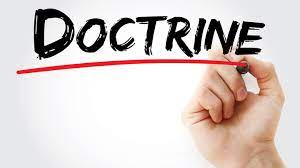Whether you believe patents promote innovation and progress or stifle it, the fact that you are reading this piece indicates that you recognise their significance. You may agree or disagree with the patent system, as do many smart academics and practitioners, but that is not why you are here. You want to know how to manage the system in order to enhance your company’s development while minimising liabilities.
 As an entrepreneur or inventor, you’ve probably come across patents that seem to cover your innovative product concept. Alternatively, if you are currently in the business of manufacturing, using, selling, or attempting to sell a product, you may have received a stop and desist letter charging patent infringement. So, what are you going to do? Anything except disregarding the patent. Do you want to discover whether you infringe on this patent? The solution, like everything else in law, is probably not as simple as you would want. You may either actually infringe a patent or use the Doctrine of Equivalents to do so (DOE). This piece focuses on the latter, which many people are unaware of.
As an entrepreneur or inventor, you’ve probably come across patents that seem to cover your innovative product concept. Alternatively, if you are currently in the business of manufacturing, using, selling, or attempting to sell a product, you may have received a stop and desist letter charging patent infringement. So, what are you going to do? Anything except disregarding the patent. Do you want to discover whether you infringe on this patent? The solution, like everything else in law, is probably not as simple as you would want. You may either actually infringe a patent or use the Doctrine of Equivalents to do so (DOE). This piece focuses on the latter, which many people are unaware of.
When confronted with a patent that supposedly covers your product, you may believe that you do not infringe because a) your product lacks one or more components of the claimed patent claim(s), or b) your product has parts that vary from the elements of the asserted patent claim(s) (s). Your analysis is accurate in part. In patent law, the “all elements rule” states that for finding infringement, the person claiming a patent must demonstrate that the accused product has each aspect of the claimed claim, either literally or equivalently. This implies that even if your product does not have all of the components of an asserted claim, it may nonetheless infringe on that claim if it has features/parts that are regarded comparable to the “missing” portion of the claim.
Under DOE, there are two standards for detecting infringement: (1) Function-Manner-Outcome test – if the accused product performs the same function in the same way to get the same result. (2) Insubstantial Differences test – if the accused product differs significantly from what is patented. Courts use either approach depending on the facts of the case and the nature of the infringing goods. For example, the Function-Way-Result test is recommended for mechanical patents, but the Insubstantial Differences Test is chosen for non-mechanical inventions such as chemical patents.
Consider the following situation to better understand the applicability of DOE:
You’ve invented a new kind of stapler and are preparing to promote it as Cool New Stapler®. You stumble across a patent (the “Stapler Patent”) that claims a stapler with a spring-system to hold stapler pins in position and urge them forward when the number of pins decreases. You’re ecstatic because your Cool New Stapler® lacks a spring mechanism, which means you’re not infringing on the Stapler patent. Not so quickly. Your Cool New Stapler® may not physically infringe on the Stapler Patent, but what about the DOE?
Using the Function-Way-Result test, you can determine whether the non-spring system in your Cool New Stapler® that keeps stapler pins in place (function) and forces them forward as the number of pins decreases (function) to maintain a constant supply of pins (result) uses elastic potential energy (way). The non-spring mechanism of your Cool New Stapler® most likely performs the same function and produces the same outcome as the spring system in the patented stapler. But does it function in the same way? What if your Cool New Staplernon-spring ®’s technology employs a rubber band rather of a spring? What about a vacuum pump? One may argue that there is no significant difference between the spring system and the rubber-band system since both function by harnessing elastic potential energy. Both work in the same manner in terms of patents. In this case, your Cool New Stapler® may infringe the claimed claim even though it lacks one of its elements, since it has an equivalent element.
A non-spring system that contains a vacuum pump, on the other hand, may not infringe on the Stapler Patent. To maintain a steady supply of pins, the vacuum pump employs a differential in pressure (method) to retain stapler pins in position (function) and urge them forward when the quantity of pins decreases (function) (result). It does not work in the same manner as the spring system since the spring system uses elastic potential energy rather than pressure difference. In this scenario, your Cool New Stapler® may not infringe the stated claim since it not only lacks a spring-system, but the system it employs, i.e., the vacuum pump, is not analogous to the spring-system. Even while your Cool New Stapler® performs the same function and achieves the same result as the patented stapler, it does not perform the function and accomplish the result in the same manner.
To summarise, even if your product is not identical to a patented product and/or lacks an aspect of a claimed claim, don’t rule out the potential that your product is nonetheless comparable to the patented claim under a Doctrine of Equivalents analysis.
